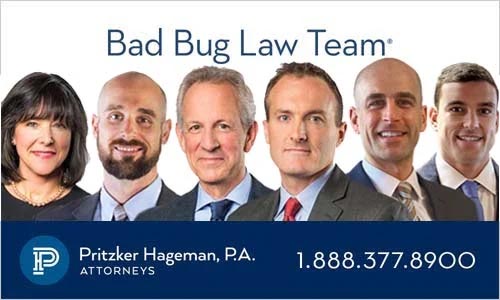With many E. coli O157:H7 outbreaks linked to romaine lettuce in 2017, 2018, and 2019, food safety experts are concerned that another outbreak could occur in 2020. Let’s take a look at how romaine lettuce is contaminated with E. coli O157:H7 bacteria in the first place.

That pathogen exists in the guts of ruminant animals, more specifically, cows and sheep. Deer can also carry it. How does it travel from those animals to farm fields?
There are several factors that come into play here. First, many concentrated animal feeding operations (CAFOs) are located near fields where romaine and other leafy greens are grown. Second, feces can contaminate ground water and canals that are a source of irrigation water. And third, two of the physical attributes of the lettuce play a role.
E. coli O157:H7 in the Water
In the deadly 2018 E. coli O157:H7 outbreak linked to romaine lettuce harvested from Arizona, officials found the outbreak strain of E. coli O157:H7 in water samples taken from a canal in the Yuma, Arizona growing region. The lettuce was traced back to “many farms” in the Yuma growing region.
The FDA noted that the canal was close to a CAFO, which holds 100,000 head of cattle at any one time. A cluster of romaine lettuce farms was “nearby” to the cattle facility.
And in the 2018 outbreak, which was linked to romaine lettuce from the Central Coastal growing regions in northern and central California, officials from the Centers for Disease Control and Prevention (CDC) found the outbreak strain of E. coli O157:H7 in sediment collected from and agricultural water reservoir on an Adam Bros. Farming Inc farm in Santa Barbara County.
As a result of these investigations, the California Leafy Greens Marketing Agreement (LGMA) amended their best practices in early 2019. The new regulations include longer buffer zones between farm fields and animal feedlots. In addition, growers will be required to categorize the source of irrigation water, test the water to see if it’s safe, and sanitize it if needed.
Physical Attributes of Romaine Lettuce
There are several physical attributes of romaine lettuce that make it more vulnerable to contamination. The first is, obviously, that lettuce is not heated or cooked before it is eaten, so there is no “kill step” that would destroy pathogens.
The second is that the deeply wrinkled and crenelated surface of the lettuce provides the perfect areas for bacteria to hide. If there are tiny tears in the lettuce surface, bacteria can actually get inside, where no amount of rinsing will remove it. Washing will not remove the pathogen anyway, since bacteria can make a biofilm matrix that is dense and shields the pathogens from cleaning and even antibiotics.
Finally, the way the lettuce grows is another contamination risk. The lettuce grows very close to the surface, and it grows in a V shape that holds and traps water. That gives pathogens in that water more time to cluster in the crenelations or burrow into the leaves.
Protect Yourself
So now you know how romaine lettuce is contaminated with E. coli O157:H7. What can you do about it?
First, pay attention to outbreak and recall notices. The FDA and CDC will announce and outbreak when it is discovered, and recalls are often issued at the same time. Secondary recalls may also be issued, if the lettuce is used to make sandwiches and salads. In one case, the CDC recommended that consumers avoid all romaine lettuce until the investigation identified a possible source.
Second, wash lettuce before you eat it. You may not be able to remove all pathogens, but washing does help protect you by reducing the number of bacteria on the lettuce.
And finally, know the symptoms of an E. coli infection. If you can recognize when someone is ill with this pathogen, you can get them help sooner.

If you or a loved one have been sickened with and E. coli O157:H7 infection or any food poisoning illness, please contact our experienced attorneys for help at 1-888-377-8900 or 612-338-0202.




